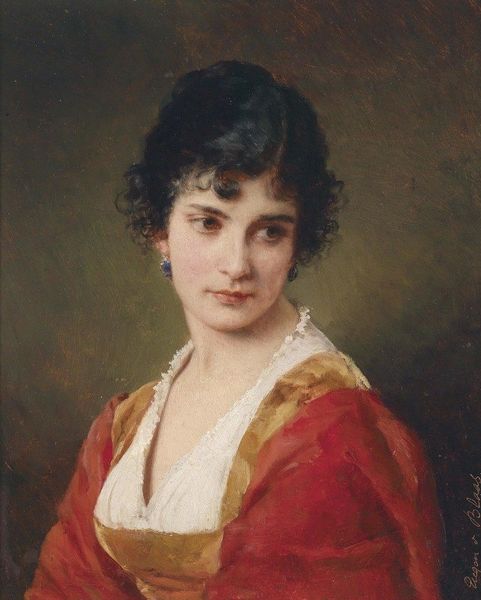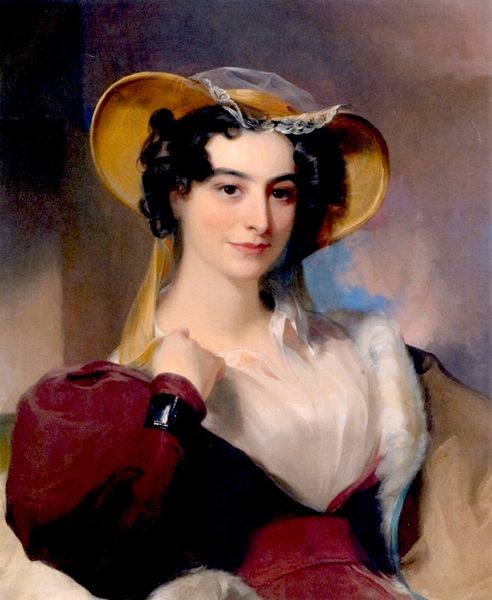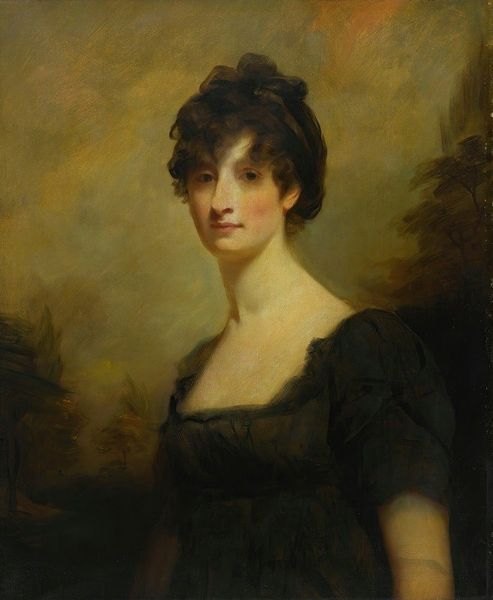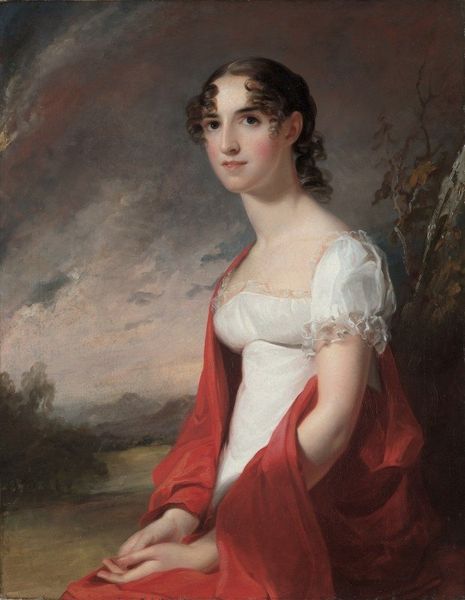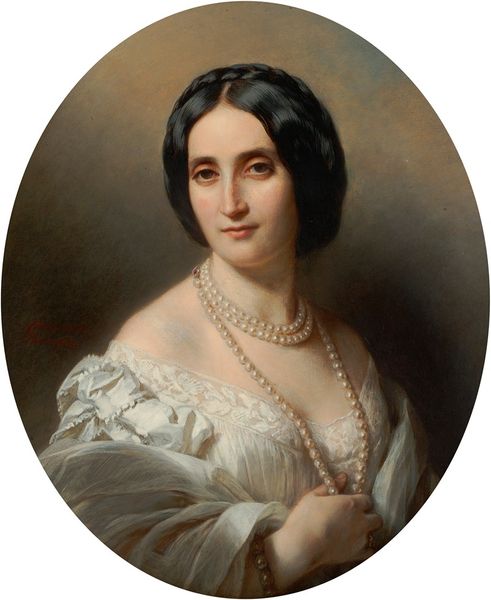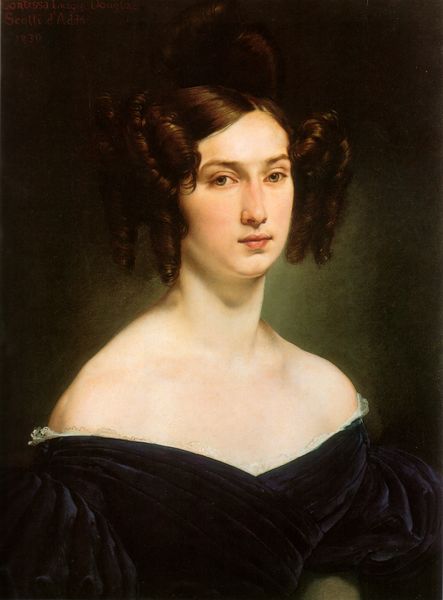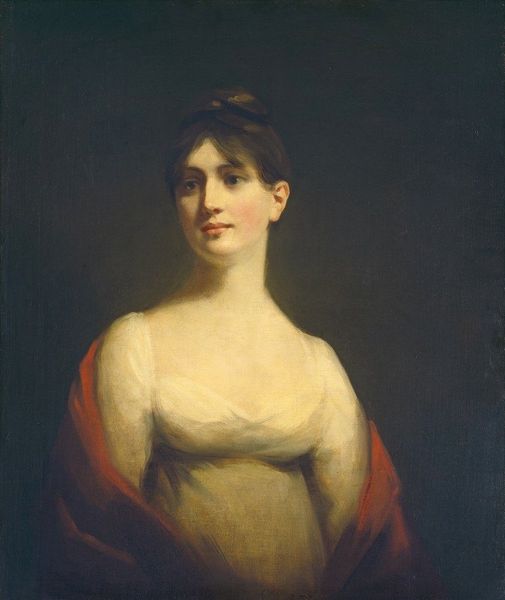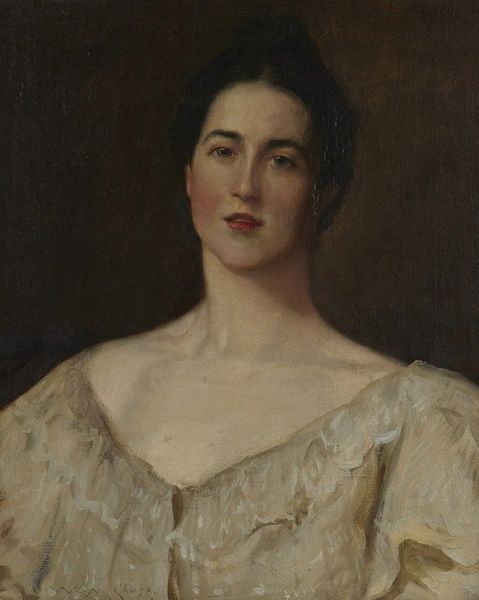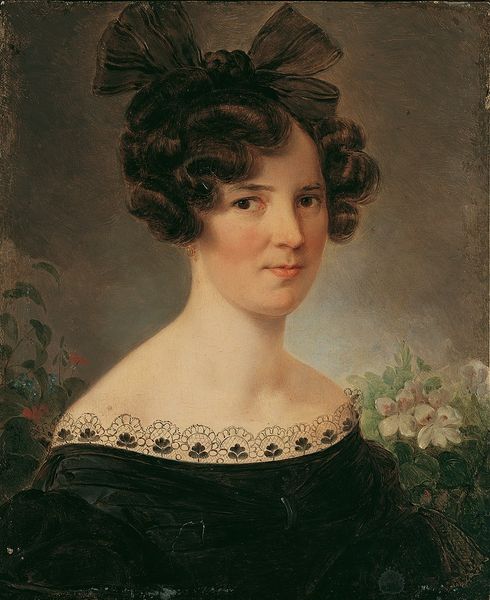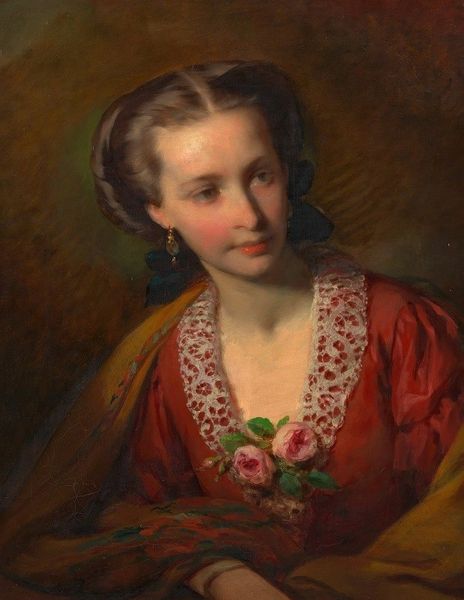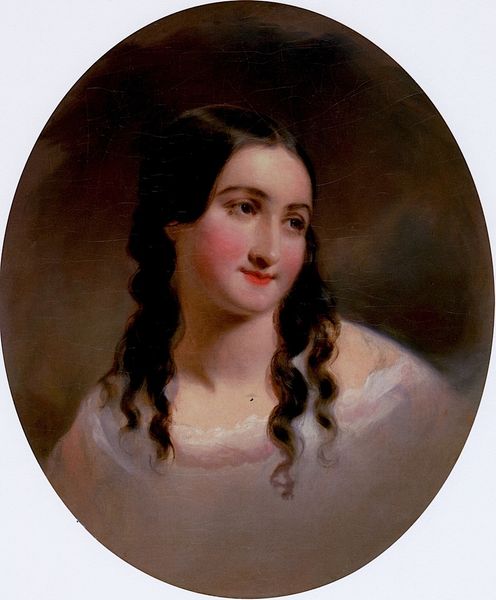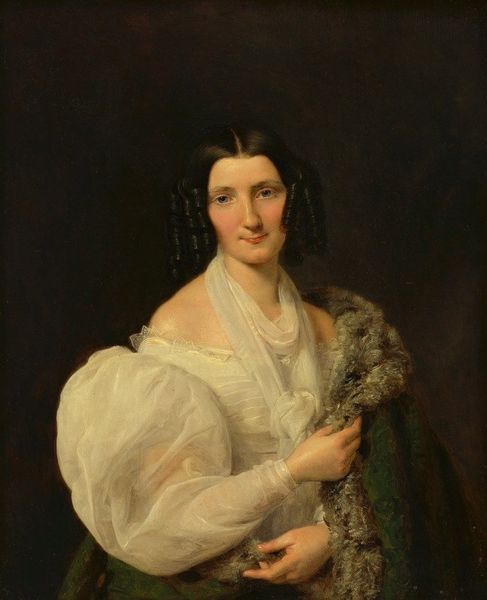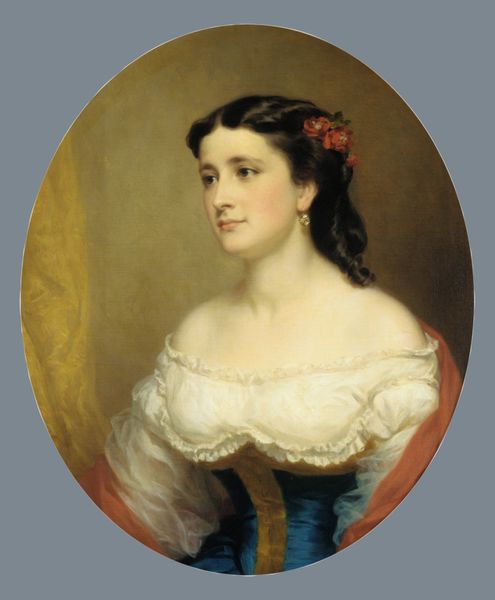
painting, oil-paint
#
portrait
#
figurative
#
painting
#
oil-paint
#
romanticism
Copyright: Public Domain: Artvee
Curator: Let's turn our attention to this striking portrait by Thomas Sully, completed around 1845. It depicts Mrs. James Montgomery, Jr., rendered beautifully in oil. Editor: My initial impression is one of wistful delicacy. The subject's soft gaze and the muted tones create a sense of intimate melancholy, a fragility that captivates. Curator: Sully's portraits, and this one is no exception, were heavily influenced by the social conventions of the era. Displaying social standing through such refined depictions, Sully earned the patronage of a wealthy elite seeking visual confirmation of their social dominance. The subject's clothing and accessories communicate much about her social position. Editor: Indeed. The necklace, the softly draped gown, the carefully arranged curls--all symbols of bourgeois femininity and, perhaps, confinement. It sparks a conversation around how women of that time navigated societal expectations within limited structures. The almost ethereal lightness that emanates from Mrs. Montgomery is interesting when thinking about such imposed restraint. Curator: The politics of display were significant too. These weren't just images, they were objects intended for very public—or perhaps semi-public—consumption. They furnished interiors, demonstrating wealth, taste, and genealogical heritage within networks of other affluent individuals, especially during this period of heightened industrial and social transformation. Editor: It's also intriguing to analyze how Sully uses romanticized notions of beauty to, in essence, curate a narrative. What did it mean to idealize femininity in this way? We are really asked to ponder not just the ‘who’ of the portrait, but also the ‘why.’ Curator: Absolutely. And Sully, as a public figure with considerable social influence, wielded a considerable degree of power in shaping cultural perspectives around race, class and gender. His images reflect the structures, even if subtly, of those deeply entrenched ideologies. Editor: It reminds us that even portraits can function as cultural artifacts that we must constantly examine and re-evaluate through updated critical lenses. Thank you, Sully, for provoking a still needed conversation. Curator: Precisely. By considering the image through the combined lens of both art and social history, we start to grasp some complex dynamics underscoring this seemingly simple portrait.
Comments
No comments
Be the first to comment and join the conversation on the ultimate creative platform.
